Exhibition place:First Floor, Fashion Gallery, China Silk Museum
Exhibition time:2021.9 - 2021.12
Human clothing is closely related to nalure in all aspects such as clothes, jewelry, a<a></a>nd accessories. Natural fibers are weaved into fabrics, natural resources are used as the transportation energy for clothing, a<a></a>nd natural elements are used as inspirations for creative design. Nature is the support of fashion, so people are able to decorate themselves.
However, human roughly takes the resources f<a></a>rom nature with no respect. When nature becomces an element showing beauty, it gets destroyed f<a></a>rom fashion as well. The pollution fashion caused has become a serious global issue that will threaten all creatures incuding humans.
Our exhibitionwill discuss the relationship between nature a<a></a>nd fashion in two parts ,it tries to put out two questions:
Mhat Fashion gained f<a></a>rom Nature?
A<a></a>nd what Fashion can give to Nature?
Commercial trade has connect the seperate countries into a whole world. In 18th century, with the marine trade fully opened, those unique materials a<a></a>nd techniques are able to work together to make dresses, bags, accessories for a person who had never been to those countries.
Gown with Floral Embroidery
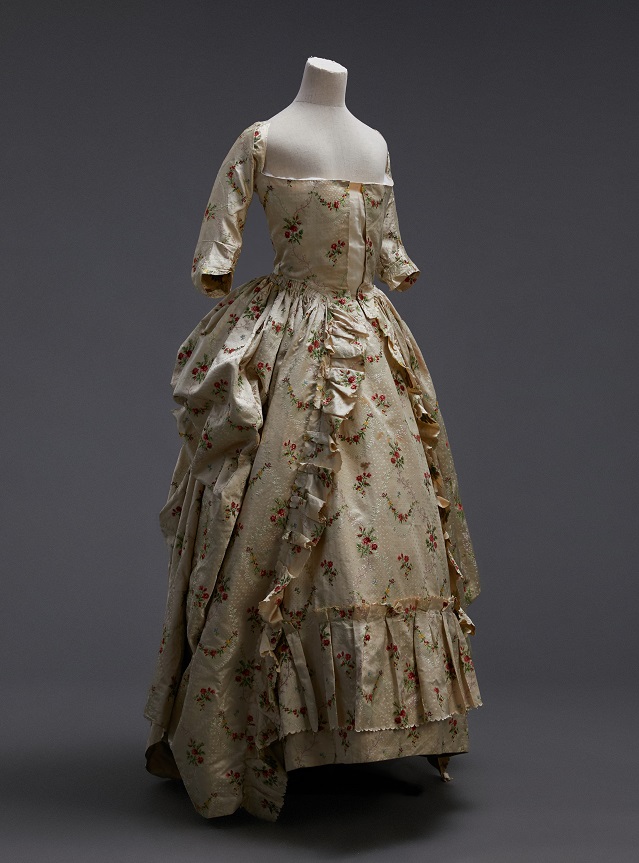


18th Century
Silk
CNSM:2016.27.2
Material is what all clothes made f<a></a>rom. People noticed those natural fibres are able to be woven into textiles for clothes. Other than nature’s fibres, those bones or branchs which is too hard to weave, can also play a role in human fashion.
Since human started weaving plant fibers into fabrics, a huge verity of plants have been taken their fibres for human clothing. Instead of life-risking hunting, collecting plants is an activity with less potential danger. Therefore, plant fiber has quickly become the most widely used material for human beings.
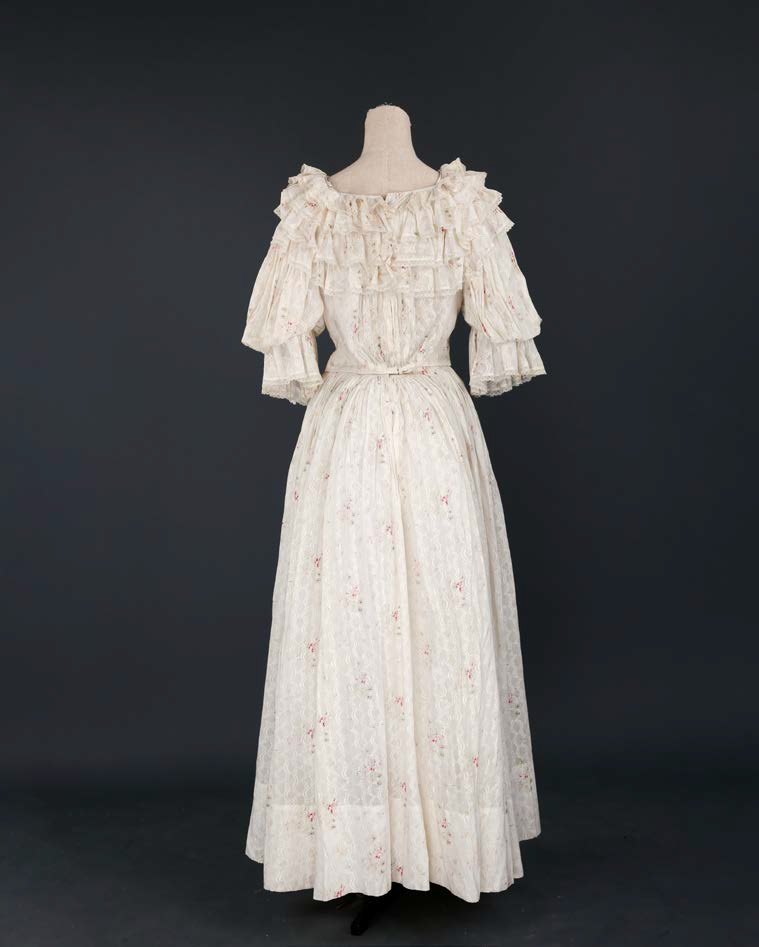
Gown
19th Century
Cotton
CNSM:2014.1.37004
Cotton originated in India a<a></a>nd spread to the world along the commercial trade route. The fabric is exquisite, colorful, light.For now, cotton has become one of the most familiar natural fibers in the sociey.

Veil
20th Century
Cotton
CNSM:2014.1.10162
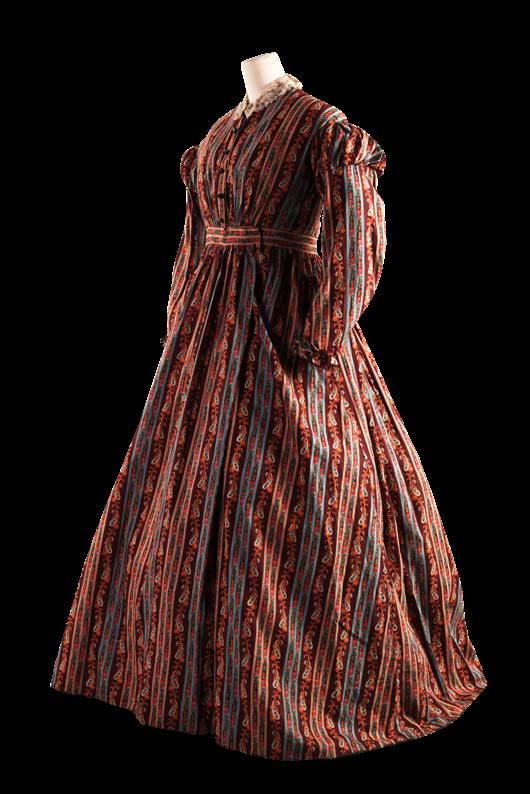
Gown Printed with Indian Style
18th Century
Cotton
CNSM:2014.1.3209
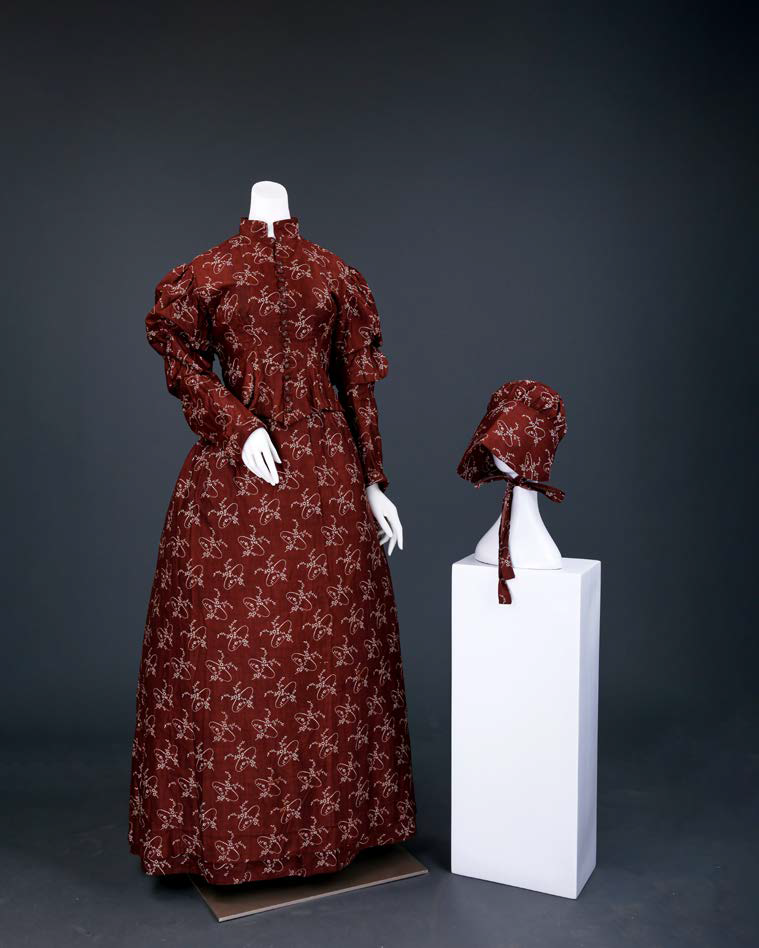
Gown a<a></a>nd Bonnet Printed with British Style
18th Century
Cotton
CNSM:2014.1.35548
Hemp is one of the earliest fibers being used for clothes. There are uncountable kinds of hemps, including flax, ramie, Chinese glass, etc. All the kinds have fluenced the people living in the habitat.

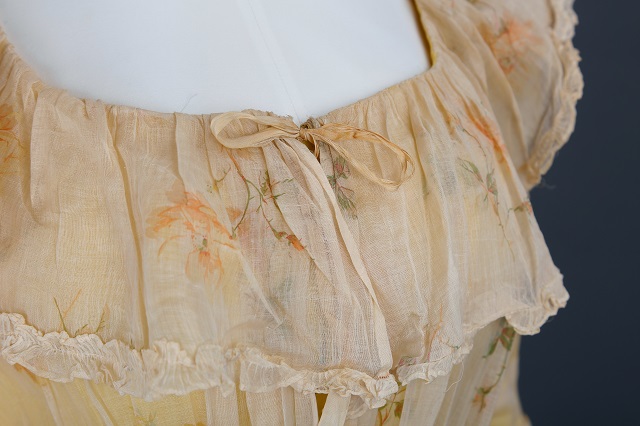
Gown
20th Century
Linum usitatissimum L.
CNSM: 2014.1.34660
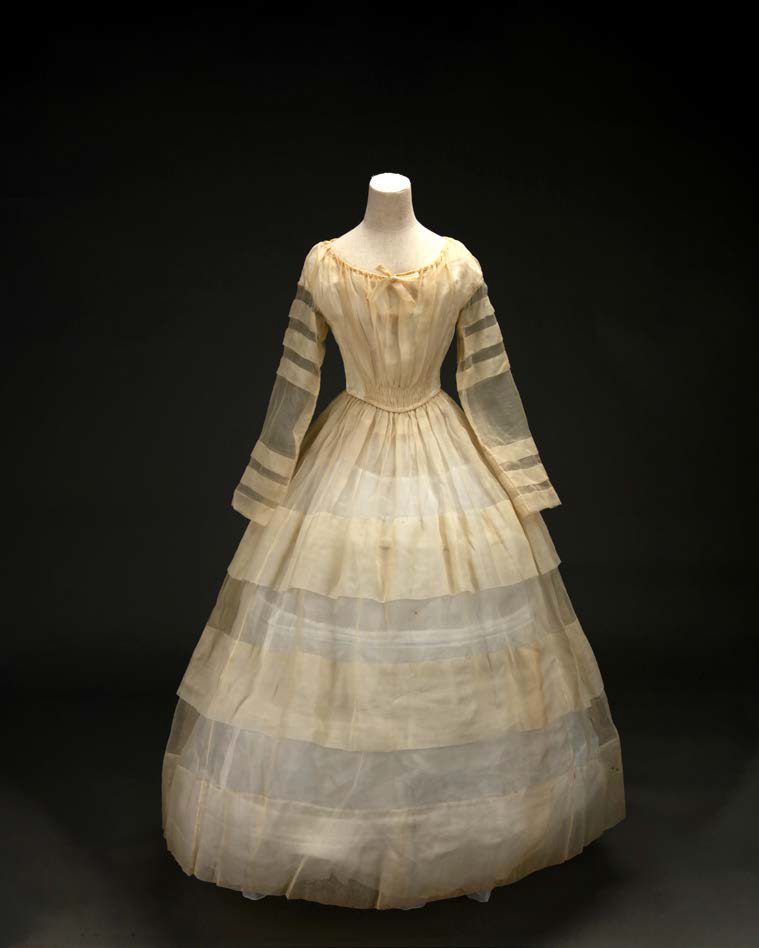
Afternoon Dress
1840-1860
Linum usitatissimum L.
CNSM: 2014.1.35520

Woman’s tunic
The Republic of China
Boehmeria nivea (L.) Gaudich.
CNSM: 2895、2896
Before textile has not yet appeared, human use those non-fibre materials to make clothes. Diverse kinds of hard tress can become interesting clothes through technical treatment. Trees are no longer the major choice for clothes now, but people still use them as decorations.
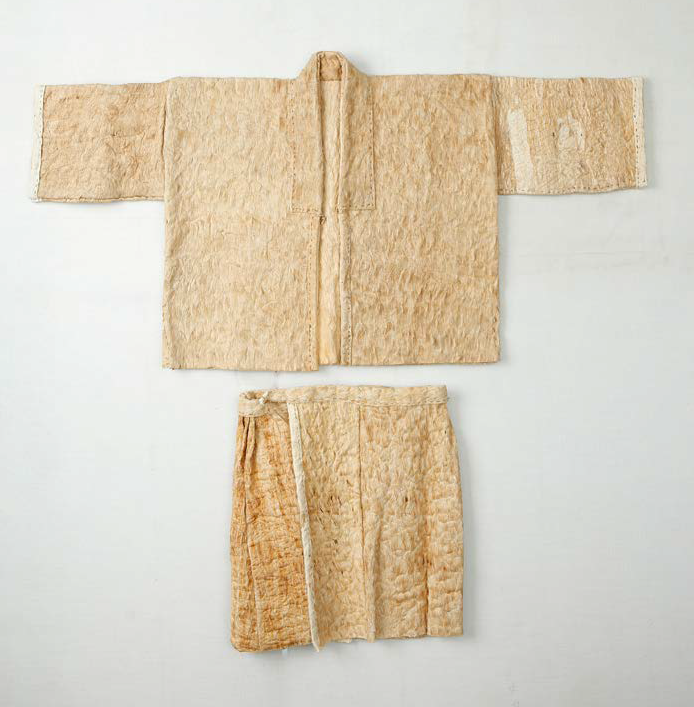
Bark Cloth
Present
Acocanthera
CNSM: 2020.60.3
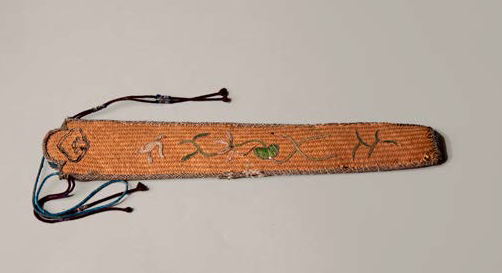
Bamboo Fan Cover
The Republic of China
Bambusoideae
CNSM:1579
Other than hemp or cotton, there are many herbs can be used for ha<a></a>nd weaving. Most of herbs are regioinal plants which will be closely related with local people’s tradition a<a></a>nd cultures.
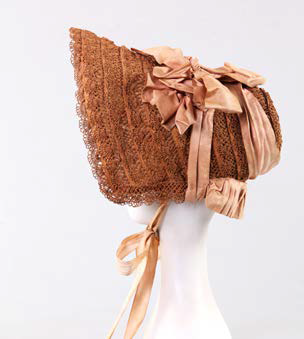
Bonnet
Modern Times
Wheat Straw
CNSM: 2014.1.36616

Hat
Present
Wheat Straw
CNSM: 2014.1.16200
Animals are the earliest material used by human. Fur of animals protects human to resist the severe cold in winter, silk is light a<a></a>nd gogerous to decorate human’s eauty, a<a></a>nd the hard bones can support the shape of fashion.Since hunting animal is an activity with dangerous, animal fur become one of the important symbols of dividing social classes.
Silk is the a symbolic animal fibre being used by human. It can be traced back to China in the Neolithic Age. Silk is tough, light a<a></a>nd beautiful. The businessman took the silk to Europe through the Silk Road.Local noble was amazed by the luxury of Silk.

Pajama
20th Century
Silk
CNSM:2014.1.2085

Gown
19th Century
Silk
CNSM: 2014.1.2341

Flapper
1920s
Silk
CNSM: 2014.1.726
Fur a<a></a>nd wool is the first natural material used in clothing. It can be used in multiple ways in textile technique. Other than textiles, animal fur is an obvious choice of clothing in winter, a<a></a>nd feathers are popular for decorating.
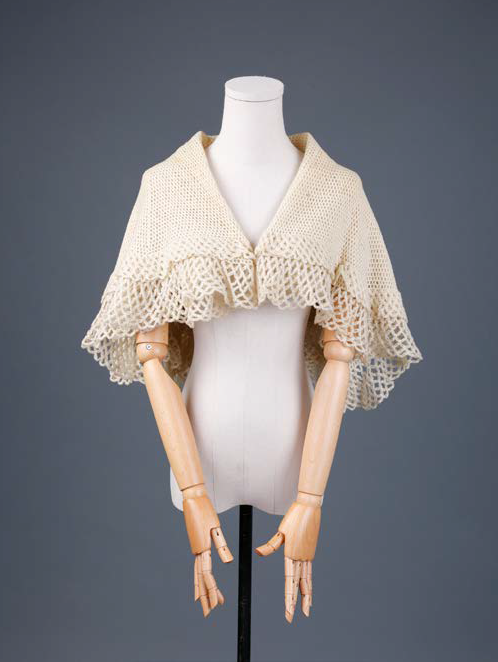
Knit Scarf
20th Century
Wool
CNSM: 2014.1.21642

Fur Coat
20th Century
Mustela sibirica
CNSM: 2014.1.37633
Skin is tough a<a></a>nd complete organ to prevent animal f<a></a>rom the dangerous in nature. This characteristic also has been used in human’s fashion. Leather tools first were made for aggressive activities like hunting or war, a<a></a>nd then turned to daily property.
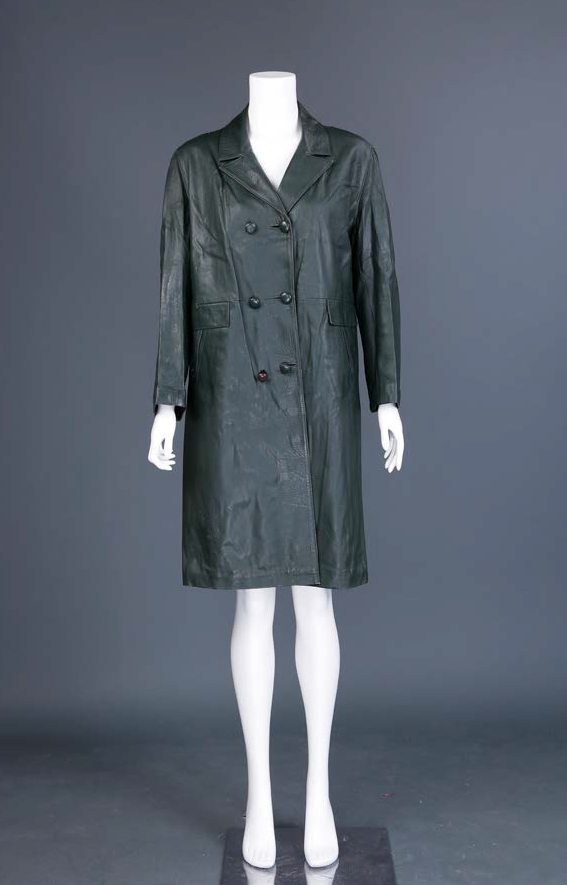
Sheep Skin
18th Century
Sheep Skin
CNSM: 2014.1.5879
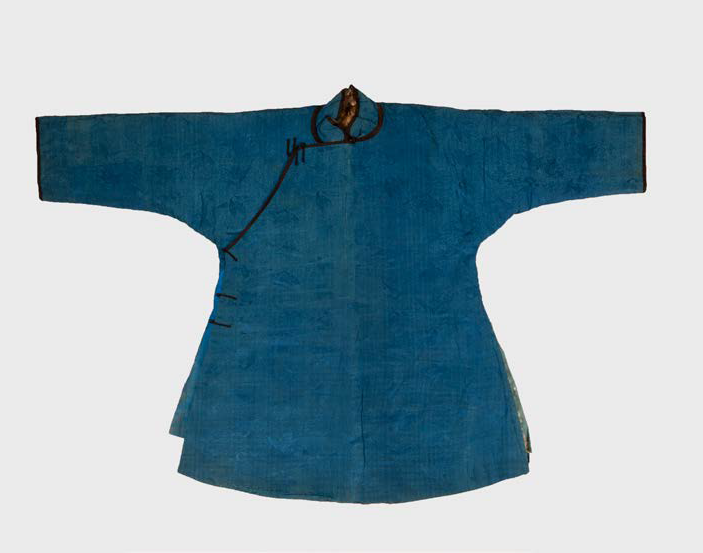
Sheep skin Clothes
20th Century
Sheep Skin
CNSM: 1167
Bone is a hard material, normally people can hardly relate it to soft clothes. But actually, human has paid close attention to bones in fashion way. Fishbone, especially whalebone is hard but flexible, so it can support the thinner waist for Europe style dress. Other than fish bones,those teeth a<a></a>nd horns also have been used for luxury decoration.

Wedding Dress
19th Century
Sericus
CNSM: 2014.1.36353
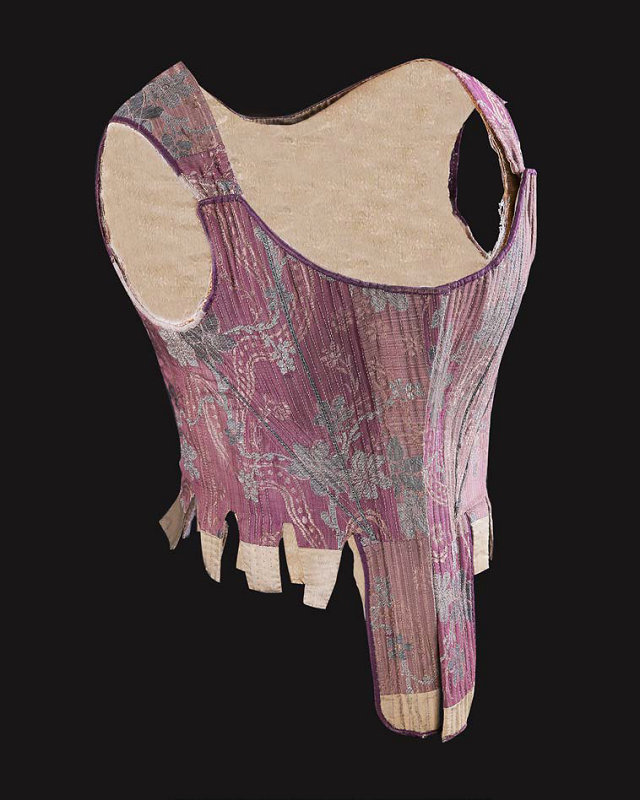
Corset
The Contemporary Era
Sericus, Whalebone
CNSM: 2017.52.1
Almost all the patterns project some nature elements.Charming nature can provide endless inspiration for fashion, designers adore the lively animals a<a></a>nd plants, a<a></a>nd record them on textiles through embroidery, brocade, printing techniques. Different cultures use have their own way of expression for describing nature in patterns.
Vivid animal patterns will bring lots of energy for clothes. Human religion usually regard some animals as gods, so they put their gods in sculptures a<a></a>nd patterns to convey their faith. Animals are also a natural pattern book, designers learn their grains, a<a></a>nd used on their clothes.
Early human has limited understa<a></a>nding with the natural phenomenon, the reverence facilitate the early religion, a<a></a>nd animals are picked to represent gods. People even make a creature f<a></a>rom their imagination. When politics connects with religion, those animal patterns also become the totem of power.
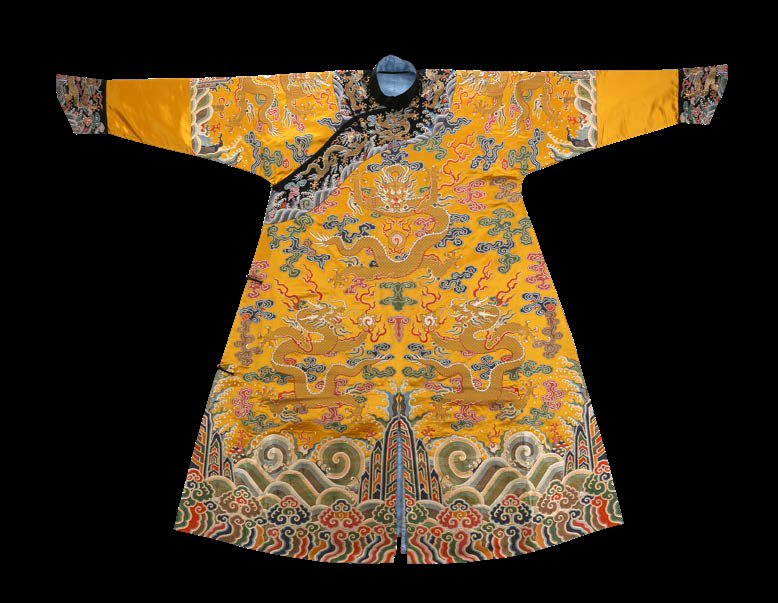
Dragon Robe Replica
2017
Silk, pure gold thread
CNSM: 2017.35.1
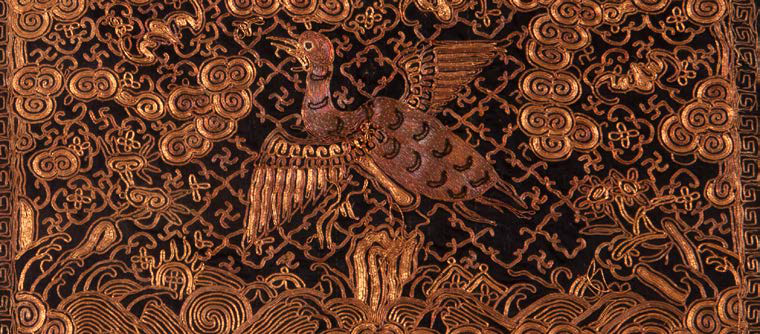
Embroidered Goose Rank Badge
The Qing Dynasty
Sericus
CNSM:1096
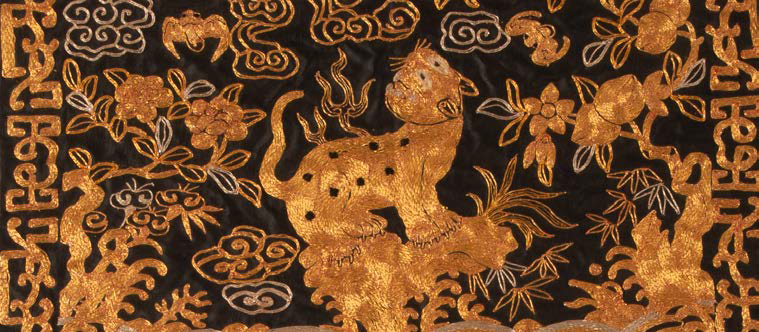
Embroidered Leopard Rank Badge
The Qing Dynasty
Sericus
CNSM:0986
The name of animals may occasionally has the same pronunciation as good wishes. People use these animal patterns to repose their wishes on clothes. Some also use the animal stories f<a></a>rom common understa<a></a>ndings or myths.
Different culture would have different ways to select a<a></a>nd describe the animals. Southeast Asian patterns often depict transportable animals like elephants, while European patterns pays more attention to top predators like lions or eagles, so they can show the power a<a></a>nd status.

Traditional Dress
20th century
Cotton
CNSM: 2016.46.1

Indian Topwear
19th century
Silk
CNSM: 2015.6.1

Silk Scarf
20th century
Cotton
CNSM: 2015.21.2
Some animals has grown stripes or colored pattern outfit, which protect them away f<a></a>rom the predators in nature. Fashion designers are amazed by those natural patterns, a<a></a>nd positively use them as clothes patterns to add wild express.
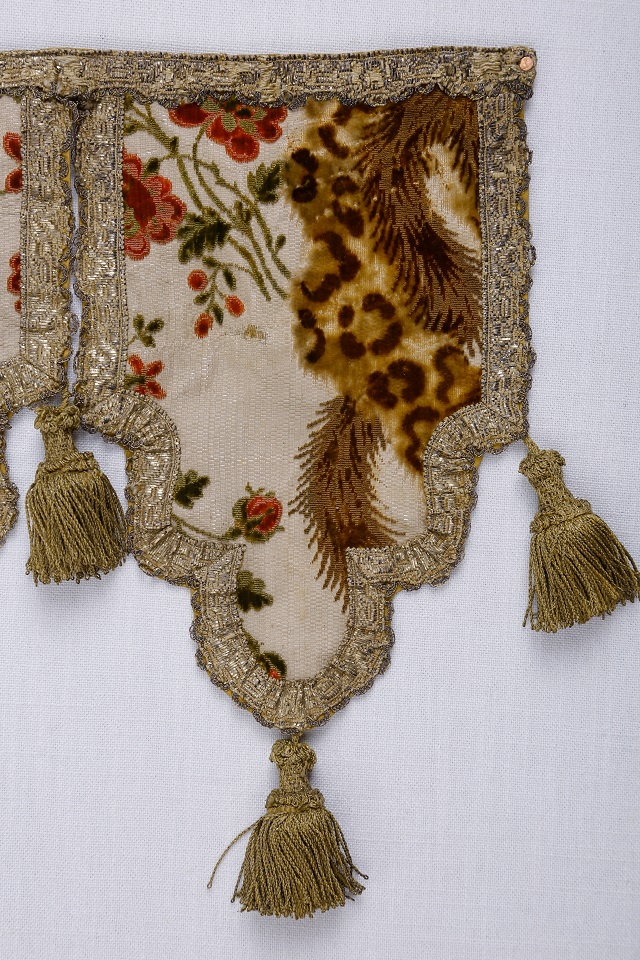
Decoration
19th century
Animal Hair
CNSM: 2017.44.15

Topwear with Leopard Print
20th century
Animal Hair
CNSM: 2014.1.4016
Plants have a large variety of kinds which will provide designers endless inspiration. All parts of plants such as flower, leaves, branches, fruits can be used for patterns. The style of plant patterns have gone through a process f<a></a>rom Romanticism to Realism.

Brocade with Flower a<a></a>nd Fruit Pattern
18th century
Silk
CNSM: 2016.18.32
Romanticism is very popular in the early period of Europe. The art style like Baroque or Rococo prefer to exaggerate the plants to huge a<a></a>nd coherent patterns. Patterns of Romanticism are able to build a majestic atmosphere for the royal families.

Brocade with Floral Design
18th century
Silk
CNSM: 2016.18.30
Scroll design is a representative of religious pattern. It spread to all the continents by Buddhist, Christian, Islamic missionaries. Religious pattern is closely related with politic a<a></a>nd society, therefore, different countries will change the patterns in the their own ways.


Bustle Gown
19th century
Silk
CNSM: 2014.1.35527
Human is curious about the unknown nature, a<a></a>nd eager to learn those unfamiliar creatures.Naturalism begin with this curiosity, in 16th century, explorers started walking into nature a<a></a>nd recording what they saw in to books, Tailors replicated those recorded nature on the dress through embroidery or weaving.
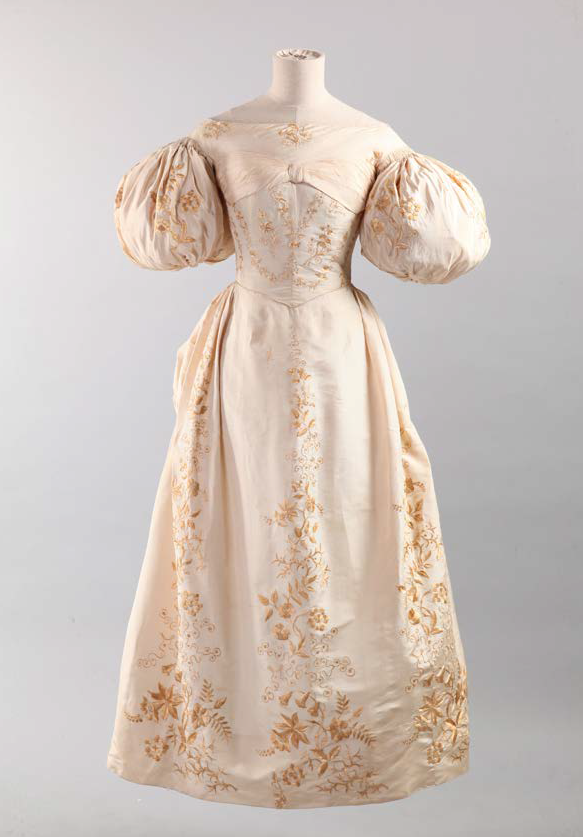
Gown
19th century
Cotton
CNSM: 2014.1.1063
Before machine coming in, printing depended on ha<a></a>nd drawing. With the request of Western art styles a<a></a>nd naturalism, many tools were invented to print the patterns as real as possible. After 19th century, the realistic printing technique started to influence Chinese printing styles.
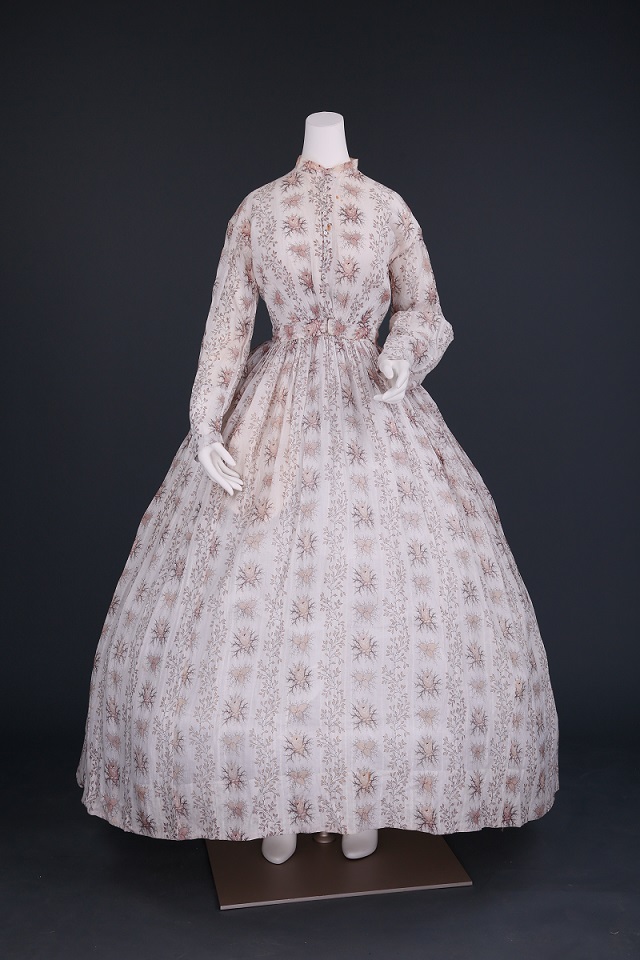

Gown with Floral Design
19th century
Cotton
CNSM: 2014.1.36947
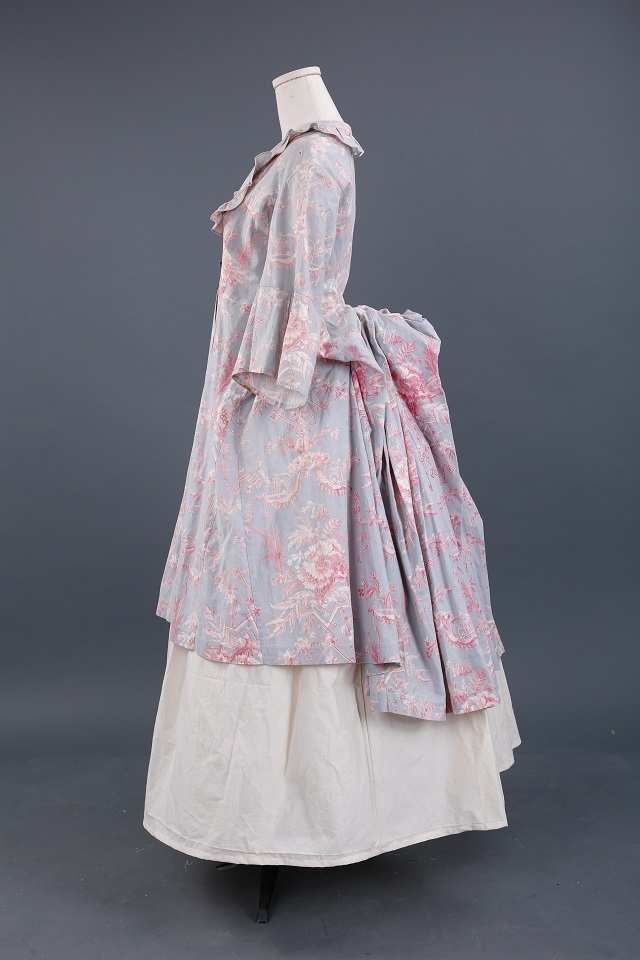
Gown with Rose Design
19th century
Linen
CNSM: 2014.1.34637
Printing is almost reaching its limitation of realistic referring, but people still want to raise another level. More a<a></a>nd more stereoscopic decorations have been used two completely replicate nature creatures.

Wedding Dress with Garment a<a></a>nd Flower on Top
19th century
Silk, Wax
CNSM: 2014.1.44, 2014.1.10163,2014.10165
Color a<a></a>nd smell do not have a solid shape, so they can not be touched in real. However, human’s eyes are developed to distinguish different color, a<a></a>nd nose are able to recognize all kinds of smell. With no doubt,color a<a></a>nd smell become the important elements in fashion.
Although fashion has gain materials a<a></a>nd inspiration f<a></a>rom nature, it does not repay nature a good feedback.Fashion industry has caused a serious environmental problem such as over-killing a<a></a>nd pollution.It seems impossible for fashion a<a></a>nd nature to develop peacefully, when people choose one side, they will have to hurt the other. Fortunately, many fashion workers start to positively solve the environmental problem in fashion. They opened a fashion way called “sustainable fashion”, which can balance the nature a<a></a>nd fashion.

Methyl Dyed Coat
19th Century
Cotton
CNSM: 2014.1.4096
Sustainable fashion is on all aspects. More a<a></a>nd more industries a<a></a>nd bra<a></a>nds seek the possibility to use new natural fibers which will cause less or even no pollution. They recycle the useless garbage a<a></a>nd turn it into fabrics, pick new plants a<a></a>nd turn it into fibers. Research will take a long time to get achievement, but it all comes to worth for protecting nature.
As an expression of fashion, designers begin to realize the importance of nature protection while leading the trend. These designers are active in the front line of sustainable fashion, integrate the understa<a></a>nding of environmental protection into the design, make people aware of the burden of consumerism on the earth, use the influence of fashion to attract social attention, a<a></a>nd call on more people to join the team of environmental protection.
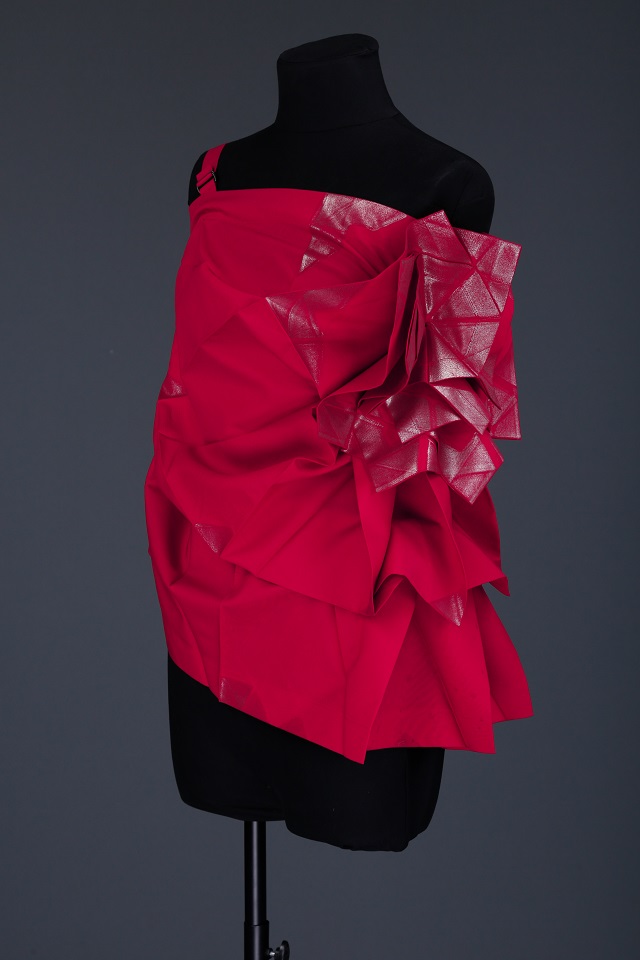

Issey Miyake
2010
polyester
Human beings produce a lot of unused garbage every day, including food, electrical appliances, daily necessities a<a></a>nd other wastes. The accumulation of these wastes will cause a lot of burden on the environment. The designer picks up a<a></a>nd sews these wastes on the design works, which not only endows the waste with secondary utilization value, but also appeals to the society to reduce the generation of waste.
 Pay attention to us
×
Pay attention to us
×